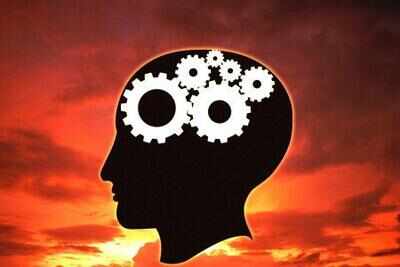How brain can be tricked to cure mental maladies

Taking forward the theory that some brain cells in people mirror a reaction they are just witness to but not part of, Ramachandran and his team are now studying if visual stimulation is enough for people with obsessive compulsive disorder (OCD). The cells, called mirror neuronsor `empathy’ neurons, also help people `feel’ the pain of others.
In the city to deliver a lecture on `human uniqueness’ at an event organised by medical treatment centre Trimed on Sunday , Ramachandran said the ongoing trial is not focusing on the feeling of empathy as much as using the neurons for therapy . “Excessive handwashing may be the single most common observable symptom of OCD,” said Ramachandran the Tamil Nadu-born scientist now based in the US. The requent that IT sometimes results habit can be so frequent that IT sometimes results in raw and broken skin. “We are now studying if this habit can be fought by making the person watch someone else wash hands or a video of the same,” said Ramachandran, adding the trial was still at a nascent stage.
Mirror neurons were discovered in the early 1990s when a team of Italian researchers found individual neurons in the brains of macaque monkeys that fired both when the monkeys grabbed an object and when they watched other primates grab the same object.
Dr Ramachandran said stimulating these mirror neurons could also help when people develop cramps or pain in their `phantom limbs’ -a condition when people develop a sensation that an amputated or missing limb is still attached. “Just watching someone massage their limb could ease the pain in their non-existent limb,” said Ramachandran. Although many of the functions of the mirror neurons are based on speculations, several research papers have suggested these cells could explain autism and even the evolution of language.
Around 70% of amputated patients experience some sort of pain in the body part that has been removed. This syndrome often triggers depression or even suicide. Although the limb has been removed, the brain continues to send signals to that body part to move. When these commands are not obeyed, it results in pain -patients desire to somehow make the limb move.
Such phantom syndrome can also be found in people who feel a part of their body is alien to them – such as one of Ramachandran’s patients, who wanted to cut off a healthy arm. “He wasn’t crazy . He was suffering from a condition called Xenomelia,” said Dr Ramachandran. The where sensory , muscular, visionary senses converge to make a 3D image. His patient’s brain had the hand part of that image missing. “And because the brain abhors discrepancy, it wanted the arm removed,” he explained.
Ramachandran said more research on mirror neurons could help unveil the mystery that still shrouds human.


